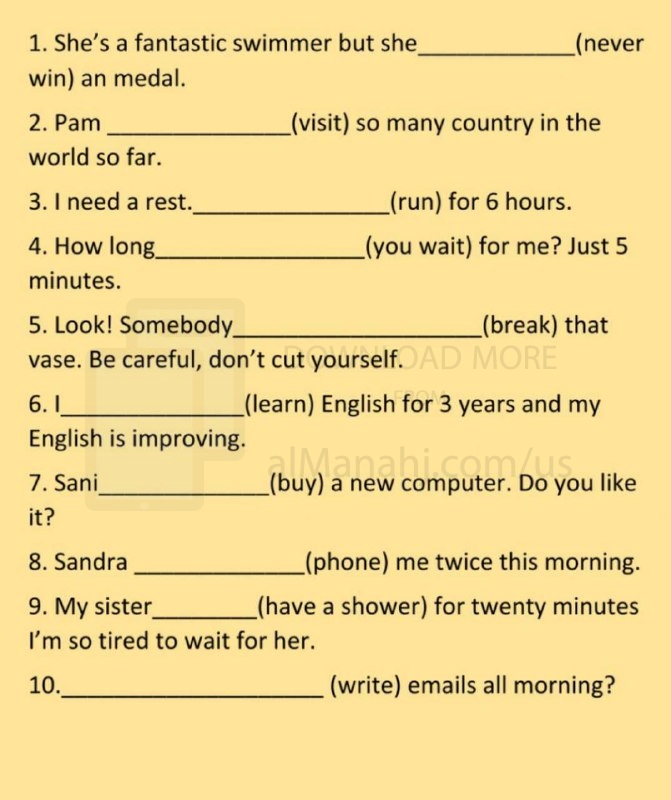| File info: Present Perfect Simple:
The Present Perfect Simple is used to describe actions or events that started in the past and have a connection to the present. It emphasizes the result or completion of the action. The structure of the Present Perfect Simple is "have/has" + past participle of the verb.
Examples:
- I have studied English for five years. (I started studying in the past and I continue to study English up to the present moment.)
- She has written three books. (She completed the action of writing three books, and this has an impact on the present.)
- They have traveled to many countries. (They have visited multiple countries in the past, and this experience is relevant to the present.)
2. Present Perfect Continuous:
The Present Perfect Continuous is used to describe actions or events that started in the past, have continued until the present moment, and may still be ongoing. It emphasizes the duration or continuity of the action. The structure of the Present Perfect Continuous is "have/has been" + present participle ("-ing" form of the verb).
Examples:
- I have been studying English for two hours. (I started studying two hours ago, and I am still studying at the moment.)
- She has been working on the project all day. (She started working on the project earlier in the day, and she is still working on it.)
- They have been waiting for the bus since morning. (They started waiting in the morning, and they are still waiting for the bus.)
Both the Present Perfect Simple and Present Perfect Continuous are used to describe actions that started in the past and have a connection to the present. However, the main difference lies in the focus on the result or completion of the action in the Present Perfect Simple, whereas the Present Perfect Continuous emphasizes the duration or continuity of the action. |
